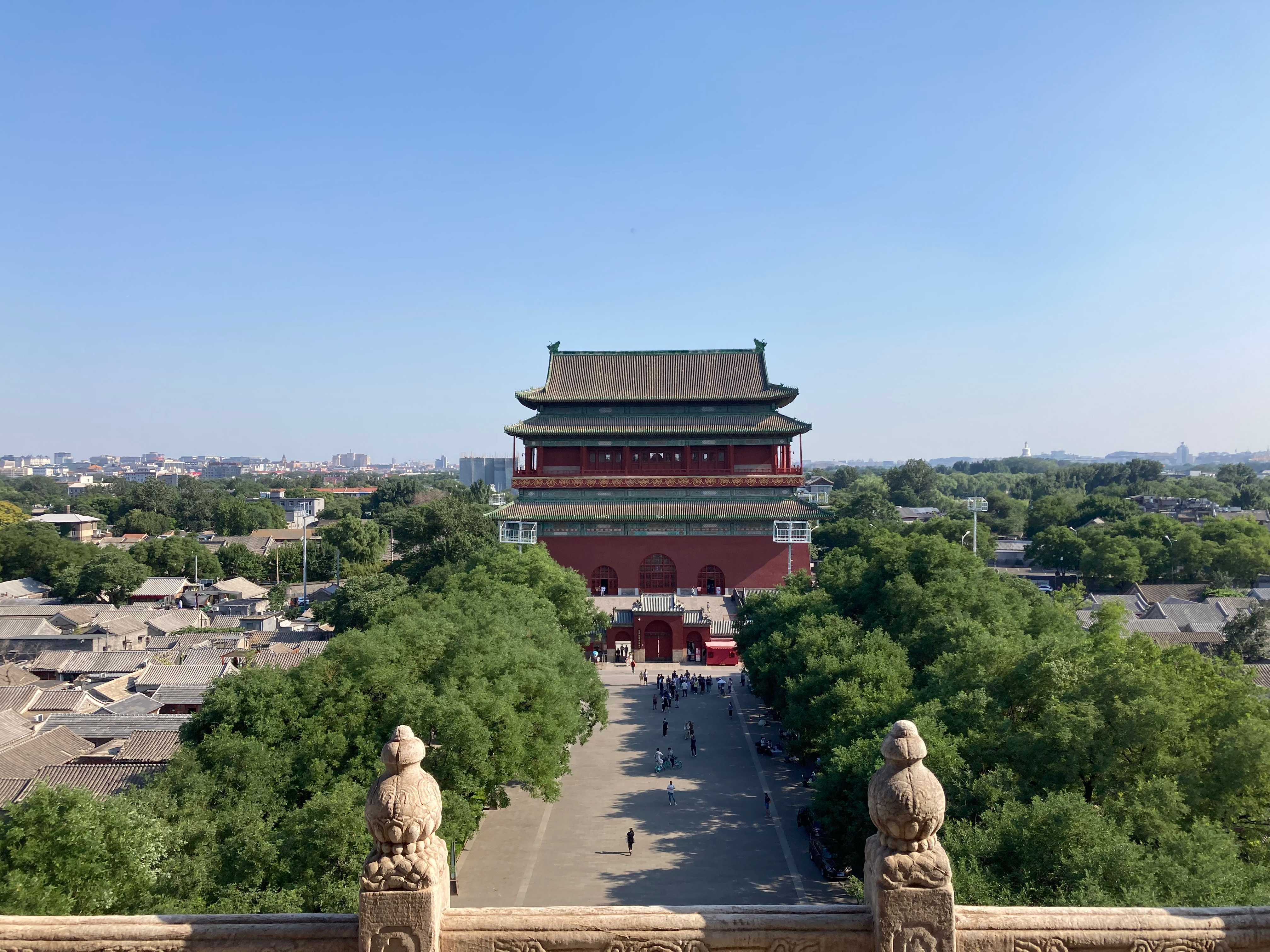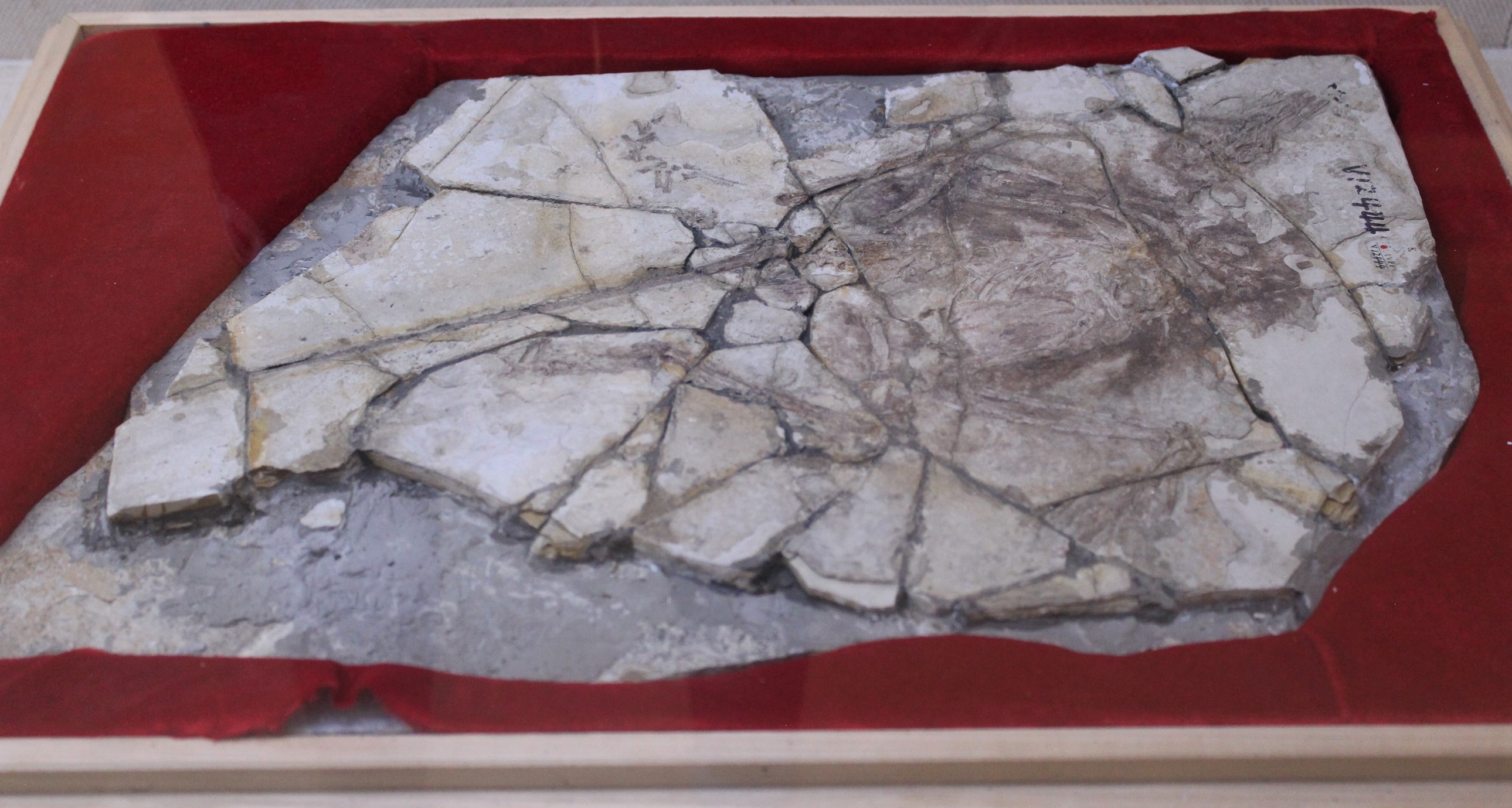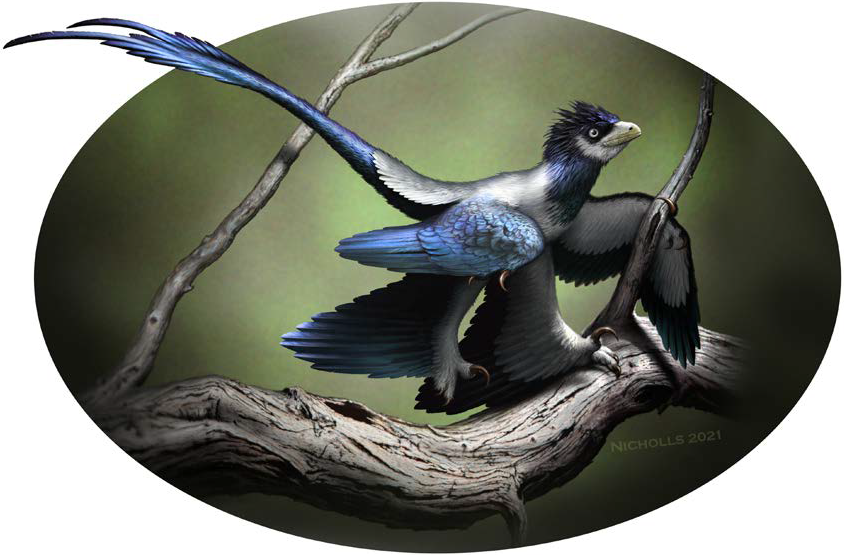|
Beijing Museum Of Natural History
The National Natural History Museum of China (NNHM; ), previously the Beijing Museum of Natural History, is a municipal public natural history museum in Dongcheng, Beijing, China. It is affiliated with the Beijing Academy of Science and Technology under the Beijing Municipal People's Government. The museum was established as the national Central Museum of Natural History by the Central Ministry of Culture and the Chinese Academy of Sciences in 1951. In 1962, during the Great Leap Forward period, the museum was transferred to the city government of Beijing and was renamed the Beijing Museum of Natural History. Initially affiliated with the Beijing Municipal Culture Bureau, the museum then came under the purview of the Beijing Municipal Science and Technology Bureau in 1975, and later, the Beijing Academy of Science and Technology in 1985. In January 2023, after receiving an approval reply from the Central Institutional Organization Commission, the Beijing city government ratifie ... [...More Info...] [...Related Items...] OR: [Wikipedia] [Google] [Baidu] |
Dongcheng, Beijing
Dongcheng () is a district of the city of Beijing. It covers the eastern half of Beijing's urban core region, including all of the eastern half of the Old City inside of the 2nd Ring Road (Beijing), 2nd Ring Road with the northernmost extent crossing into the area within the 3rd Ring Road (Beijing), 3rd Ring Road. Its area is further subdivided into 17 subdistricts. Settlement in the area dates back over a millennium. It did not formally become a district of the city until the establishment of the Republic of China (1912–1949), Republic of China in 1911. The name Dongcheng was first given to it in a 1958 reorganization; it has existed in its current form since a 2010 merger with the former Chongwen, Beijing, Chongwen to its south. Dongcheng includes many of Beijing's major cultural attractions, such as the Forbidden City and Temple of Heaven, both UNESCO List of World Heritage Sites in China, World Heritage Sites. More than a quarter of the city's Major national historical and ... [...More Info...] [...Related Items...] OR: [Wikipedia] [Google] [Baidu] |
Mamenchisaurus
''Mamenchisaurus'' ( , or spelling pronunciation ) is an extinct genus of sauropod dinosaurs known for their remarkably long necks which made up nearly half the total body length. Numerous species have been assigned to the genus; however, the validity of these assignments has been questioned. Fossils have been found in the Sichuan Basin and Yunnan Province in China. Several species from the Upper Shaximiao Formation, whose geologic age is uncertain, have been described. However, evidence suggests this formation to be no earlier than the Oxfordian stage of the Late Jurassic. ''M. sinocanadorum'' dates to the Oxfordian stage (158.7 to 161.2 mya), and ''M. anyuensis'' to the Aptian stage of the Early Cretaceous (around 114.4 mya). Most species were medium-large to large sauropods, measuring roughly in length—possibly up to , based on two undescribed vertebrae.Russell, D.A., Zheng, Z. (1993). "A large mamenchisaurid from the Junggar Basin, Xinjiang, People Republic of China." ' ... [...More Info...] [...Related Items...] OR: [Wikipedia] [Google] [Baidu] |
Cenozoic
The Cenozoic Era ( ; ) is Earth's current geological era, representing the last 66million years of Earth's history. It is characterized by the dominance of mammals, insects, birds and angiosperms (flowering plants). It is the latest of three geological eras of the Phanerozoic Eon, preceded by the Mesozoic and Paleozoic. The Cenozoic started with the Cretaceous–Paleogene extinction event, when many species, including the non-avian dinosaurs, became extinct in an event attributed by most experts to the impact of a large asteroid or other celestial body, the Chicxulub impactor. The Cenozoic is also known as the Age of Mammals because the terrestrial animals that dominated both hemispheres were mammalsthe eutherians ( placentals) in the Northern Hemisphere and the metatherians (marsupials, now mainly restricted to Australia and to some extent South America) in the Southern Hemisphere. The extinction of many groups allowed mammals and birds to greatly diversify so that large m ... [...More Info...] [...Related Items...] OR: [Wikipedia] [Google] [Baidu] |
Dinosaur Egg
Dinosaur eggs are the organic vessels in which a dinosaurs, dinosaur embryo develops. When the first scientifically documented remains of non-avian dinosaurs were being described in England during the 1820s, it was presumed that dinosaurs had laid egg (biology), eggs because they were reptiles. In 1859, the first scientifically documented dinosaur egg fossils were discovered in France by Jean-Jacques Poech, although they were mistaken for giant bird eggs (birds were not yet recognized as dinosaurs at the time). The first scientifically recognized non-avian dinosaur egg fossils were discovered in 1923 by an American Museum of Natural History crew in Mongolia. Dinosaur eggshell can be studied in thin section and viewed under a microscope. The interior of a dinosaur egg can be studied using CAT scans or by gradually dissolving away the shell with acid. Sometimes the egg preserves the remains of the developing embryo inside. The oldest known dinosaur eggs and embryos are from ''Masso ... [...More Info...] [...Related Items...] OR: [Wikipedia] [Google] [Baidu] |
Anchiornis
''Anchiornis'' is a genus of small, four-winged Paraves, paravian dinosaurs, with only one known species, the type species ''Anchiornis huxleyi'', named for its similarity to modern birds. The Latin name ''Anchiornis'' derives from a Greek word meaning "near bird", and ''huxleyi'' refers to Thomas Henry Huxley, a contemporary of Charles Darwin. ''Anchiornis'' fossils have been found only in the Tiaojishan Formation of Liaoning Province, Liaoning, China, in rocks dated to the Late Jurassic, about 160 million years ago. It is known from hundreds of specimens, and given the exquisite preservation of some of these fossils, it became the first Mesozoic dinosaur species for which almost the entire life appearance could be determined, and an important source of information on the early evolution of birds. Discovery and history The first known fossil of ''Anchiornis'' (its type specimen) was dug up in the Yaolugou area of Jianchang County, Liaoning, China. These rocks have been diffic ... [...More Info...] [...Related Items...] OR: [Wikipedia] [Google] [Baidu] |
Microraptor
''Microraptor'' (Greek language, Greek, μικρός, ''mīkros'': "small"; Latin language, Latin, ''raptor'': "one who seizes") is a genus of small, four-winged dromaeosaurid dinosaurs. Numerous well-preserved fossil specimens have been recovered from Liaoning, China. They date from the early Cretaceous Jiufotang Formation (Aptian stage), 125 to 120 million years ago. Three species have been named (''M. zhaoianus'', ''M. gui'', and ''M. hanqingi''), though further study has suggested that all of them represent variation in a single species, which is properly called ''M. zhaoianus''. ''Cryptovolans'', initially described as another four-winged dinosaur, is usually considered to be a synonym of ''Microraptor''. Like ''Archaeopteryx'', well-preserved fossils of ''Microraptor'' provide important evidence about the evolutionary relationship between birds and earlier dinosaurs. ''Microraptor'' had long pennaceous feathers that formed aerodynamic surfaces on the arms and tail but a ... [...More Info...] [...Related Items...] OR: [Wikipedia] [Google] [Baidu] |
Confuciusornis
''Confuciusornis'' is a genus of basal crow-sized avialan from the Early Cretaceous Period of the Yixian and Jiufotang Formations of China, dating from 125 to 120 million years ago. Like modern birds, ''Confuciusornis'' had a toothless beak, but closer and later relatives of modern birds such as ''Hesperornis'' and '' Ichthyornis'' were toothed, indicating that the loss of teeth occurred convergently in ''Confuciusornis'' and living birds. It was thought to be the oldest known bird to have a beak, though this title now belongs to an earlier relative '' Eoconfuciusornis''. It was named after the Chinese moral philosopher Confucius (551–479 BC). ''Confuciusornis'' is one of the most abundant vertebrates found in the Yixian Formation, and several hundred complete specimens have been found. History of discovery In November 1993, the Chinese paleontologists Hou Lianhai and Hu Yoaming of the Institute of Vertebrate Paleontology and Paleoanthropology (IVPP) at Beijing, visited fos ... [...More Info...] [...Related Items...] OR: [Wikipedia] [Google] [Baidu] |
Liaoning
) , image_skyline = , image_alt = , image_caption = Clockwise: Mukden Palace in Shenyang, Xinghai Square in Dalian, Dalian coast, Yalu River at Dandong , image_map = Liaoning in China (+all claims hatched).svg , mapsize = 275px , map_alt = Map showing the location of Liaoning Province , map_caption = Map showing the location of Liaoning Province , coordinates = , subdivision_type = Country , subdivision_name = China , named_for = —"Liao River, Liao (River)" —"pacification" "Pacified of the Liao (River)" , seat_type = Capital , seat = Shenyang , seat1_type = , seat1 = , parts_type = Divisions , parts_style = para , p1 = 14 Prefectures of China, prefectures , p2 = 100 Counties of China, counties , p3 = 1511 Townships of China, townships , government_type = Provinces of ... [...More Info...] [...Related Items...] OR: [Wikipedia] [Google] [Baidu] |
Feathered Dinosaur
A feathered dinosaur is any species of dinosaur possessing feathers. That includes all species of birds, and in recent decades evidence has accumulated that many non-avian dinosaur species also possessed feathers in some shape or form. The extent to which feathers or feather-like structures were present in dinosaurs as a whole is a subject of ongoing debate and research. It has been suggested that feathers had originally functioned as thermal insulation, as it remains their function in the down feathers of infant birds prior to their eventual modification in birds into structures that support flight. Since scientific research began on dinosaurs in the early 1800s, they were generally believed to be closely related to modern reptiles such as lizards. The word ''dinosaur'' itself, coined in 1842 by paleontologist Richard Owen, comes from the Greek for 'terrible lizard'. That view began to shift during the so-called dinosaur renaissance in scientific research in the late 1960s; ... [...More Info...] [...Related Items...] OR: [Wikipedia] [Google] [Baidu] |
Tuojiangosaurus
''Tuojiangosaurus'' (meaning " Tuo River lizard") is a genus of herbivorous stegosaurian dinosaur from the Late Jurassic Period, recovered from the Upper Shaximiao Formation of what is now Sichuan Province in China. Description ''Tuojiangosaurus'' was a large stegosaur, reaching in length and in body mass. Physically similar to the North American ''Stegosaurus'', ''Tuojiangosaurus'' is the best understood of the Chinese stegosaurs. In 1977, Dong provided a diagnosis but this largely consisted of traits shared with other stegosaurus. In 1990, Peter Malcolm Galton pointed out an autapomorphy: the spines of the vertebrae of the tail base possess spines with bony skirts running from their front to the sides. In 2006, Susannah Maidment and Guangbiao Wei would identify two other diagnostic characters: the frontal bones are wider than they are long, and the supraacetabular and posterior processes of the ilium are well-separated. ''Tuojiangosaurus'' has the typical narrow and l ... [...More Info...] [...Related Items...] OR: [Wikipedia] [Google] [Baidu] |
Yangchuanosaurus
''Yangchuanosaurus'' is an extinct genus of metriacanthosaurid theropod dinosaur that lived in China from the Middle Jurassic to Late Jurassic periods (Bathonian to Tithonian stages), and was similar (although slightly larger) in size and appearance to its North American and European relative, ''Allosaurus''. ''Yangchuanosaurus'' hails from the Upper Shaximiao Formation and was the largest predator in a landscape that included the sauropods ''Mamenchisaurus'' and ''Omeisaurus'' and the stegosaurs '' Chialingosaurus'', ''Tuojiangosaurus'' and '' Chungkingosaurus''. This theropod was named after the area in which was discovered, Yongchuan, in China. Discovery and species Dong ''et al.'' (1978) named ''Yangchuanosaurus shangyouensis'' on the basis of CV 00215, a complete skull and skeleton which was collected from the Shangshaximiao Formation, near Yongchuan, Yongchuan District, Sichuan. It dates to the Oxfordian stage of the Late Jurassic period, about 161.2 to 157.3&nbs ... [...More Info...] [...Related Items...] OR: [Wikipedia] [Google] [Baidu] |
Lufengosaurus
''Lufengosaurus'' (, meaning "Lufeng lizard") is a genus of massospondylid dinosaur which lived during the Early Jurassic period in what is now southwestern China."Lufengosaurus." In: Dodson, Peter & Britt, Brooks & Carpenter, Kenneth & Forster, Catherine A. & Gillette, David D. & Norell, Mark A. & Olshevsky, George & Parrish, J. Michael & Weishampel, David B. ''The Age of Dinosaurs''. Publications International, LTD. p. 38. . History of Discovery The first remains of ''Lufengosaurus'' were found during the late 1930s by geologist Bien Meinian in the Lower Lufeng Formation at Shawan, near Lufeng in the Yunnan Province of China. From 1938 onwards, Meinian was joined by paleontologist C. C. Young (Chinese: 杨钟健, Yáng Zhōngjiàn). Young would go on to name the animal's type species, ''Lufengosaurus huenei,'' in 1940, with the generic name referring to Lufeng where it was found and the specific name honoring Young's old tutor, the German paleontologist Friedrich von Huene. ... [...More Info...] [...Related Items...] OR: [Wikipedia] [Google] [Baidu] |








